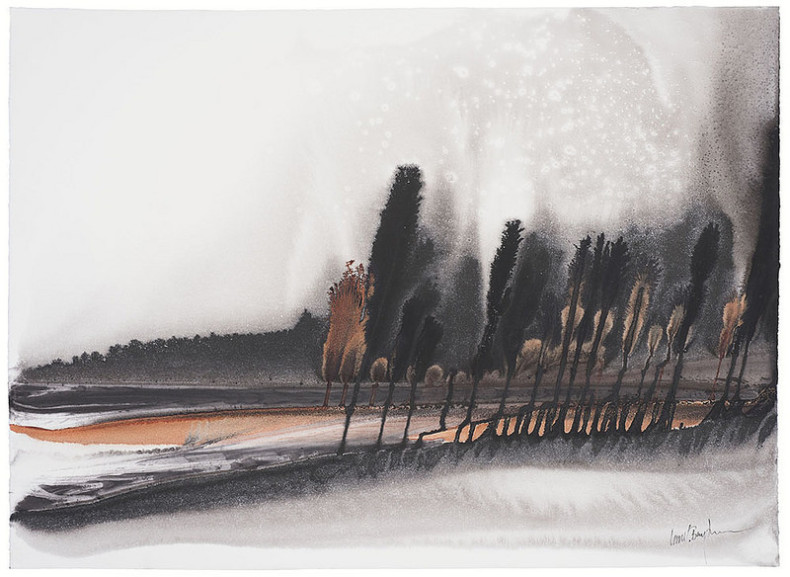The Carlton Complex, the largest wildfire in the history of Washington state, started on July 14, 2014 in the foothills of the North Cascades. When it was finally extinguished, almost 40 days later, it had burned more than 250 homes and disrupted thousands of lives in Okanogan County, a rural county on the northern edge of the state. Over the past year, I’ve been reporting on the county’s recovery from the fire, and along the way I heard about an artist named Ian Boyden.
In the summer of 2007, during a trip to Okanogan County from his home in southern Washington, Boyden decided to hike up an 8,000-foot peak called Tiffany Mountain. He’d read that it was one of the most striking climbs in the Pacific Northwest, and he was not disappointed. “It was probably the most transformative hike of my life,” he told me recently.
His guidebook had promised a dense evergreen forest, but the trail was lined with twisted tree skeletons and blackened boulders, remnants of the 2006 Tripod Fire. To Boyden, who grew up in and around the old-growth stands of the Oregon coast, the place looked less like a forest and more like a classic Chinese landscape painting—nature rendered in brushstrokes. “It had been transformed, but not by human hands,” he says. “It was a sculpture greater than any human could imagine.”
 Boyden had studied art for several years in China, and he knew that traditional Chinese ink sticks—made with pine soot and bound with animal glue—are often identified with particular places. He returned from Tiffany Mountain with plastic baggies full of pine charcoal and the idea of making an ink that was literally rooted in the Pacific Northwest.
Boyden had studied art for several years in China, and he knew that traditional Chinese ink sticks—made with pine soot and bound with animal glue—are often identified with particular places. He returned from Tiffany Mountain with plastic baggies full of pine charcoal and the idea of making an ink that was literally rooted in the Pacific Northwest.
Boyden experimented with various binders and different textures of soot, using the ink to paint forest landscapes that suggest both trees and flames. In 2011, he took a bag of charcoal collected from the Tripod Fire to China, where an acquaintance processed it into liquid ink and loaded it into inkjet printer cartridges. Boyden then used those cartridges to print giant black-and-white photographs of charred trees. Where the fire had turned trees into charcoal images, Boyden had turned charcoal into images of trees.
For Boyden, the project is a way to explore the limits of familiar things—to test, in a sense, the boundaries created by language. Does what we think of as a tree end at its highest leaf, or at the furthest reach of the vapor it transpires? Does it include the sunlight that feeds it, the fire that burns it, and the carbon it leaves behind?
Boyden returns to Tiffany Mountain every year, and he says the once-stark forest is now filled with wildflowers and shrubs. Last year, the Carlton Complex burned right up to the southern edge of the Tripod. Right now, it’s easy to tell where one fire ends and the other begins. In a few years, though, the boundary will be hard to find.
Photographs courtesy of Ian Boyden.

Love this story, Michelle. I’m in the Methow now reading this and remembering having some of the same feelings as I hiked that very same trail to Tiffany Mountain two weeks ago. There is an odd, haunting beauty among the blackened trees. But also a sense of hope emerges with the fireweed in full bloom among the seedling trees. Great story.